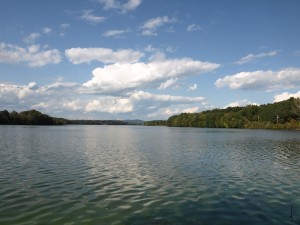Water is on the minds of Rockland residents this summer, and not just because of the record U.S. drought. Rockland County’s main water provider, United Water NY, wants to build a treatment plant on the Hudson River that would deliver more freshwater to Rockland taps. Some people are in favor of boosting supply to this growing suburban region, a short drive from the George Washington and Tappan Zee bridges. Others are opposed, citing the cost, in energy and dollars, plus the danger to fish and other wildlife. As the project awaits a decision from the state Department of Environmental Conservation, a new debate on water consumption has emerged. Should people be encouraged, or even required, to use less? And if so, how?
Such questions are not easily addressed in Rockland County, where a for-profit company controls 90 percent of the water supply, land-use is decided locally by a patchwork of towns and villages and the water supply is regulated by several state agencies. The issues are laid out in a new policy report by Stuart Braman, a researcher at Columbia University’s Lamont-Doherty Earth Observatory, and Simon Gruber, an environmental planner in the Hudson Valley, under the auspices of the State University of New York, New Paltz.


